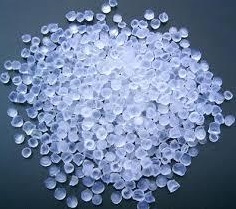 LONDON (ICIS)–Turkish polymers players are hoping demand will pick up after the 24 June election following a recovery in the lira’s exchange rate against the dollar, but new capacities in the US and potential new sanctions on Iran may yet disrupt further trade of polyethylene (PE) and polypropylene (PP) in the country.
LONDON (ICIS)–Turkish polymers players are hoping demand will pick up after the 24 June election following a recovery in the lira’s exchange rate against the dollar, but new capacities in the US and potential new sanctions on Iran may yet disrupt further trade of polyethylene (PE) and polypropylene (PP) in the country.
His Justice and Development (AK) party’s margin of victory will be key for the economy.
Immediately following the announcement of the election, some players suggested that trading would pick up directly afterwards, as no matter the result, political volatility should be limited for the next few years.
While an overall majority would have been a relief for the economy, according to sources, things stand less clear now after Erdogan said in May he intended to have a more active role in the running of monetary policy, a fact that caused the lira to collapse against the dollar.
The Turkish lira (TL) was trading at $1:TL3.81 on 1 March. By 23 May, the exchange rate stood at $1:TL4.90.
By Monday morning, the lira had recovered some losses, trading at $1:TL4.71.
The country’s central bank came to the currency’s rescue on 28 May, calming down markets, but sources in the country and Turkey analysts predicted at the time a rough path for the country’s economy in coming months.
Only six months ago, the Turkish polymers story was meant to be a different one, with players anticipating a better year than 2017, but after the promising start, the market stagnated as the lira fell in value.
Stock levels are poor for end users, with many players divesting their stocks as soon as it became evident that the local currency was dropping significantly.
This could prompt players to return to market in the near future, especially if demand climbs following Ramadan.
Many traders have large stocks remaining, having bought at higher prices, and they are now holding onto these volumes for fear of selling for significant losses.
This may ease any period of tightness once demand returns to the market and could undermine moves to hike prices by suppliers, as the traders are likely to be keen to move their stocks.
PP is structurally tight across the globe, so upward pressure is likely to be a permanent fixture throughout the year.
PE is more of a mixed picture, with high density polyethylene (HDPE) film currently tight as producers focus on that grade to satisfy spiking prices in China.
Once HDPE pipe prices cool, supply levels should balance.
Linear low density polyethylene (LLDPE) supply is ample and large volumes from expanded US capacities have been recorded in the most recent import and export statistics from Turkstat for the month of April.
PE prices are expected to struggle to climb much in the coming months, as the US capacities saturate markets around the world.
Even if the majority does not come to Turkey, it is likely to displace volumes elsewhere.
Sanctions on Iran are likely to limit trade between the two countries, although there are workarounds for the determined.
These usually involve routing cargo through another country and, for many, it will not be worth the effort and they will look elsewhere, hitting mostly HDPE.
At the moment, this is not having much effect on price but it may make a difference when demand returns to the market.
The revival of demand levels is currently key, following many weeks of limited business.
A jump in buying interest may stretch poorly stocked players and restart demand. The difficulty is predicting when players will be tempted back to market.
Pictured: The bridge over the Bosporus linking Istanbul’s European and Asian parts
Source: WestEnd61/REX/Shutterstock
